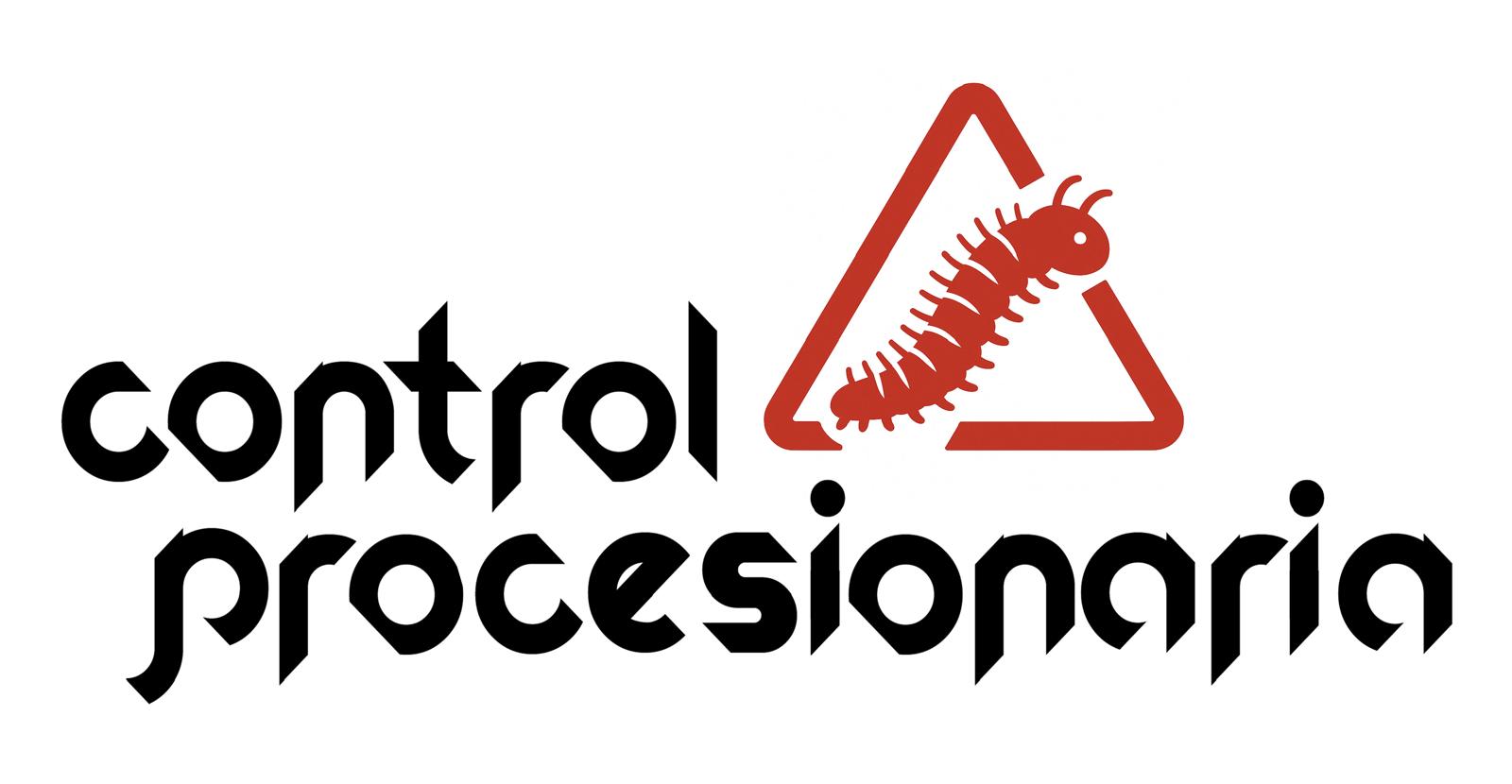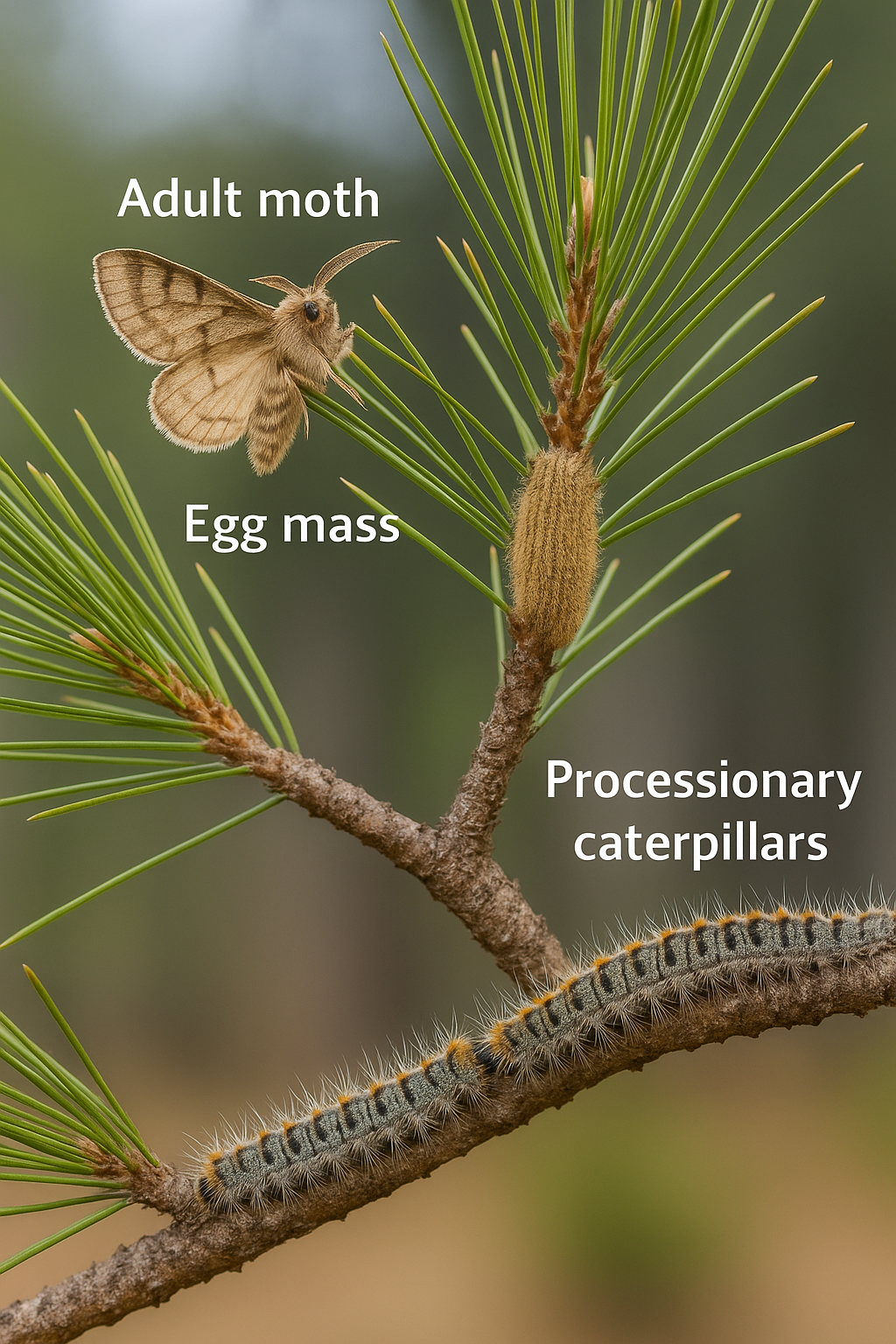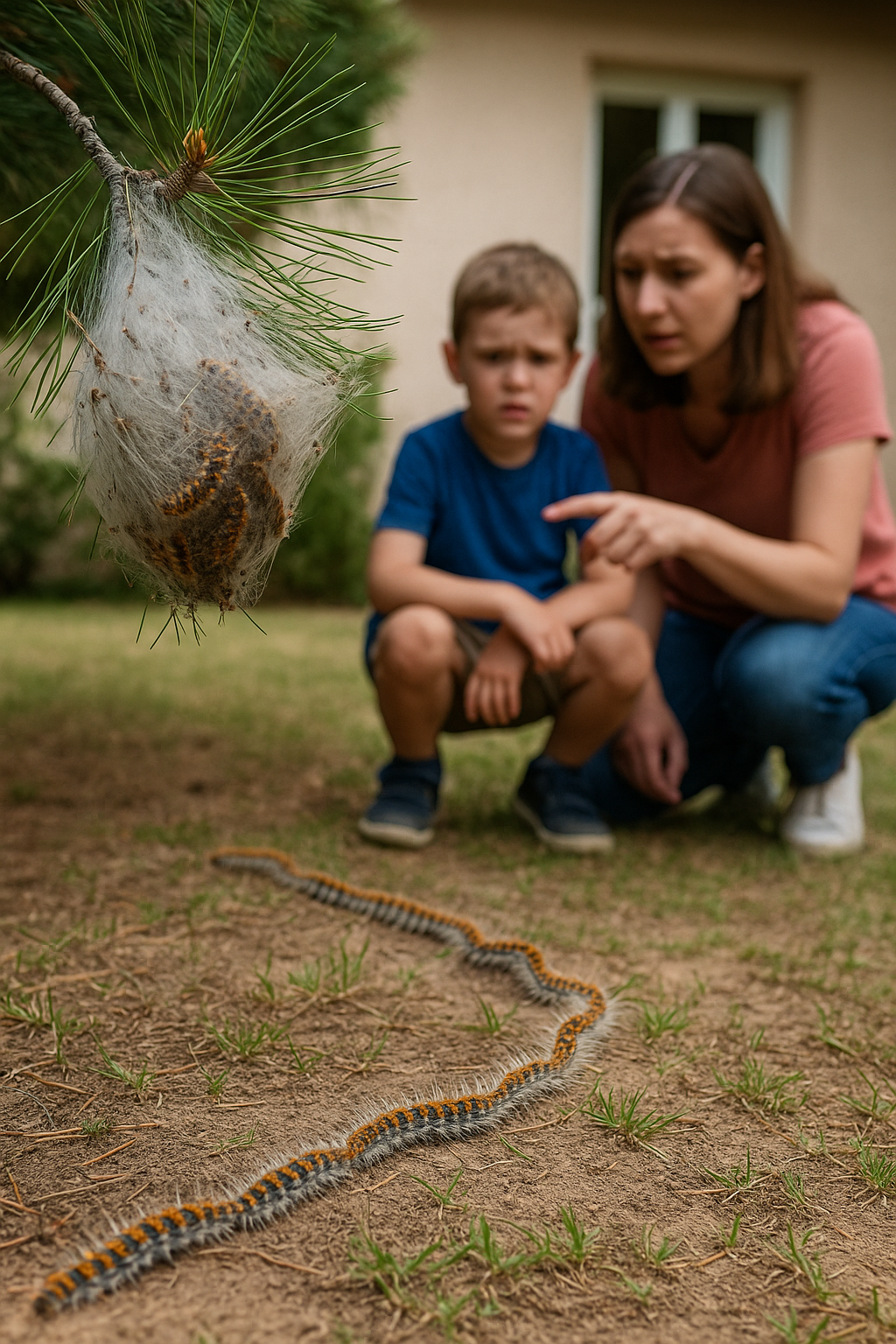The pine processionary (Thaumetopoea pityocampa) is one of the most common forest pests in Mediterranean ecosystems. Understanding its biological cycle is essential for effective and sustainable control.
Reproduction and adult moths
The adult phase begins with the emergence of butterflies or moths between June and AugustThe females live only 24-48 hours, during which time they mate and lay their eggs on the pine needles.
Each female can lay between 150 and 300 eggs, which it protects with hairs and scales on its abdomen.
These data have been extensively studied in studies of Fitzgerald (State University of New York) and Forest Research UK.
Eggs and hatching
The eggs take a while to hatch. 30 and 45 days to hatch, depending on the ambient temperature. The caterpillars emerge in late summer and immediately begin feeding on pine needles (Pinus halepensis, P. pinea or P. nigra).
According to CABI Compendium, the rate of hatching and development varies depending on latitude and local microclimate.
Larval development
The caterpillars go through five larval stages as they feed on tender pine leaves.
During the winter months they build silky nests visible in the treetops, where they take refuge during the day.
This stage extends from September to February, and that is when they cause the greatest defoliation.
Studies of Plant Health Center (Scotland) and ScienceDirect describe this phase in detail.
Descent and underground phase
When spring arrives, the caterpillars descend in rows to the ground to look for a suitable place to bury themselves.
There they form a underground cocoon where they remain as chrysalis for months or even years.
According to sciencedirect (2022), the diapause period can be extended depending on the winter cold or altitude.
Adult emergency
The new generation of moths emerges among June and AugustThe adults emerge from the underground pupa, mate and start the cycle again.
This process closes a complete cycle that can last between 12 months and 3 years, depending on weather conditions.
The observations of Koppert Biological Systems confirm this variability.
Factors that affect the biological cycle
- Temperature: Mild winters speed up the cycle; cold winters slow it down.
- Altitude: at higher altitudes, the cycle is longer.
- Food availability: the shortage of needles can limit larval growth.
- Natural parasitoids: Hymenoptera like Baryscapus servadeii parasitize the eggs of processionary moth (MDPI, 2022).
Importance for control and prevention
Knowing the biological cycle of the processionary moth is essential to apply treatments at the optimal time.
To Processionary Control We work with ecological techniques such as endotherapy and biological control, respecting legislation and environmental safety.
📚 Scientific references and reputable bibliography
- Thaumetopoea pityocampa (processionary pine) | CABI Compendium
- Prolonged pupal diapause drives population dynamics of the pine processionary moth
- Thaumetopoea pityocampa – ScienceDirect Topics
- Factors affecting pine processionary moth (Thaumetopoea pityocampa)
- Abundance and impact of egg parasitoids on the pine processionary moth
- Expansion of geographic range in the pine processionary moth caused by increased winter temperatures
- Pine processionary moth outbreaks cause longer growth reductions in pines
- Thaumetopoea pityocampa species complex: phylogeny-based revision
- Thaumetopoea pityocampa – PlantwisePlus Knowledge Bank
- Range-Expansion in Processionary Moths and Biological Control
Main source: CABI Compendium, ScienceDirect, MDPI, Forest Research UK, Plant Health Centre, ResearchGate, and ControlProcessionaria.cat.




